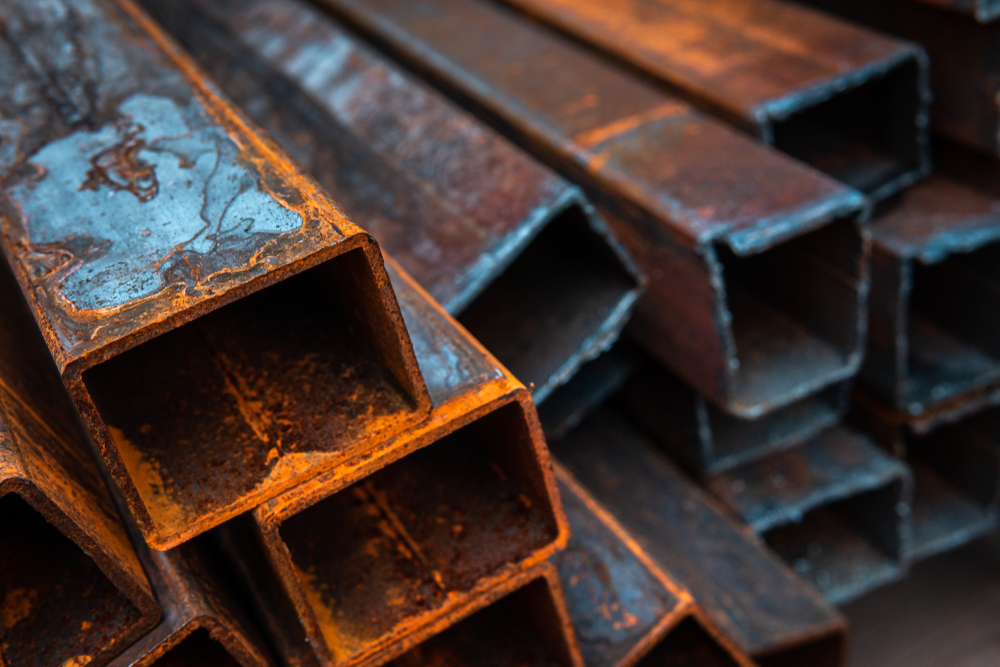Is Stainless Steel Prone To Rusting?
Posted on November 14, 2021 at 5:20 PM

Even though stainless steel has built-in corrosion resistance, it may and will rust under specific circumstances not as rapidly or badly as ordinary steel. When stainless steel is exposed to harmful chemicals, salt, grease, moisture, or heat over an extended length of time, it corrodes.
The corrosion resistance of stainless steel is mostly determined by the quantity of chromium present. When the upper surface of stainless steel is scratched off, a new chromium oxide layer cannot develop if there is insufficient chromium concentration near the surface. As a result, the alloy is very prone to many forms of corrosion.
Stainless steel fundamentals:
It is useful to comprehend how stainless steel alloys vary from other steels in order to understand why stainless steel is rust-resistant and how this resistance deteriorates.
Stainless steel has at least 10.5 percent chromium. This chromium immediately interacts with the surrounding oxygen, forming a thin oxide coating on the steel's exterior. Unlike iron oxide, which often takes the form of flaky and corrosive rust, chromium oxide adheres to the steel. As a result, it serves as a protective barrier. The chromium oxide acts as a passive layer, keeping the iron in the alloy isolated from the air and water in the environment. This coating is responsible for stainless rust resistance.
Stainless steel requires little maintenance and is resistant to oxidation and staining, making it a great material for a wide range of applications.
Stainless steels are classified into four types: austenitic, ferritic, martensitic, and duplex. Austenitic stainless steel dominates the industry, accounting for more than 70% of total stainless steel output. Its features include a maximum of 0.15 percent carbon and a minimum of 16 percent chromium, resulting in very good rust resistance. Ferritic stainless steel has lower corrosion resistance than austenitic grades but outperforms martensitic stainless steel. Duplex stainless steels have excellent resistance to localized corrosion, including pitting, crevice corrosion, and stress corrosion cracking.
Corrosion mechanisms in stainless steel
The following are the six most typical kinds of stainless steel corrosion:
General:-
- Metal loss is uniform throughout the whole surface.
- Stainless steel with a pH level below one is more susceptible to corrosion attack.
Galvanic:-
- In the existence of an electrolytic solution, one metal corrodes preferentially over others in an electrolysis reaction.
Intergranular:-
- Corrosion when crystallite borders are more prone to erode than interior surfaces.
- Occurs after heating austenitic stainless steel at temperatures ranging from 842°F to 1562°F.
Pitting:-
- Abscesses or holes as a consequence of localized corrosion.
- This happens when stainless steel is exposed to chloride-containing surroundings.
Crevice:-
- Corrosion in a gap among two connecting layers.
- Developed by the joining of two metals or the joining of a metal and a non-metal.
Cracking caused by stress corrosion:-
- Deformation development in a corrosive environment.
- Cracking is caused by tensile forces combined with corrosive climatic stimuli.
General corrosion is regarded as the least harmful kind of corrosion since it is foreseeable, controlled, and often prevented. Localized corrosion, such as pitting and crevice corrosion, is more difficult to detect owing to the reduced surface area impacted, yet it may still be harmful. Stress corrosion cracking is also a source of worry since the cracks may go undetected until the application fails.
Rust-proof stainless steel
Stainless steel corrosion prevention measures should be used throughout the stainless steel lifespan. Best practises in the engineering and manufacturing stages, as well as frequent servicing, will extend the metal's functionality and beauty.
1. Designing
Taking a strategic approach to stainless steel design pays dividends in the long run. Water penetration and surface damage may be reduced with careful management at the design stage of stainless steel applications. Water drainage holes should be utilised wherever feasible, and cavities and cracks should be kept to a minimum. Air flow is vital, and the design should allow for unobstructed circulation of air throughout the operation.
2. Imitation
It is critical to avoid touching stainless steel with iron or ordinary steel during the fabrication stage. This necessitates constant observation of the surrounding area, which includes work tables, tools, storage units, steel turning rollers, and chains. Any carbon steel dust particles that settle onto the stainless steel surface during manufacture might contaminate it, increasing the possibility of rust development. Cleaning and grinding equipment used with carbon or low alloy steel must also be kept isolated from stainless steels.
3. Care and upkeep
Regular maintenance is essential for preventing stainless steel rust and slowing the advancement of existing rust. It is essential to remove any rust that has developed, either mechanically or chemically. The filth that forms may then be removed with warm water and soap. A rust-resistant coating should be applied after washing.
For more information regarding stainless steel, contact us.